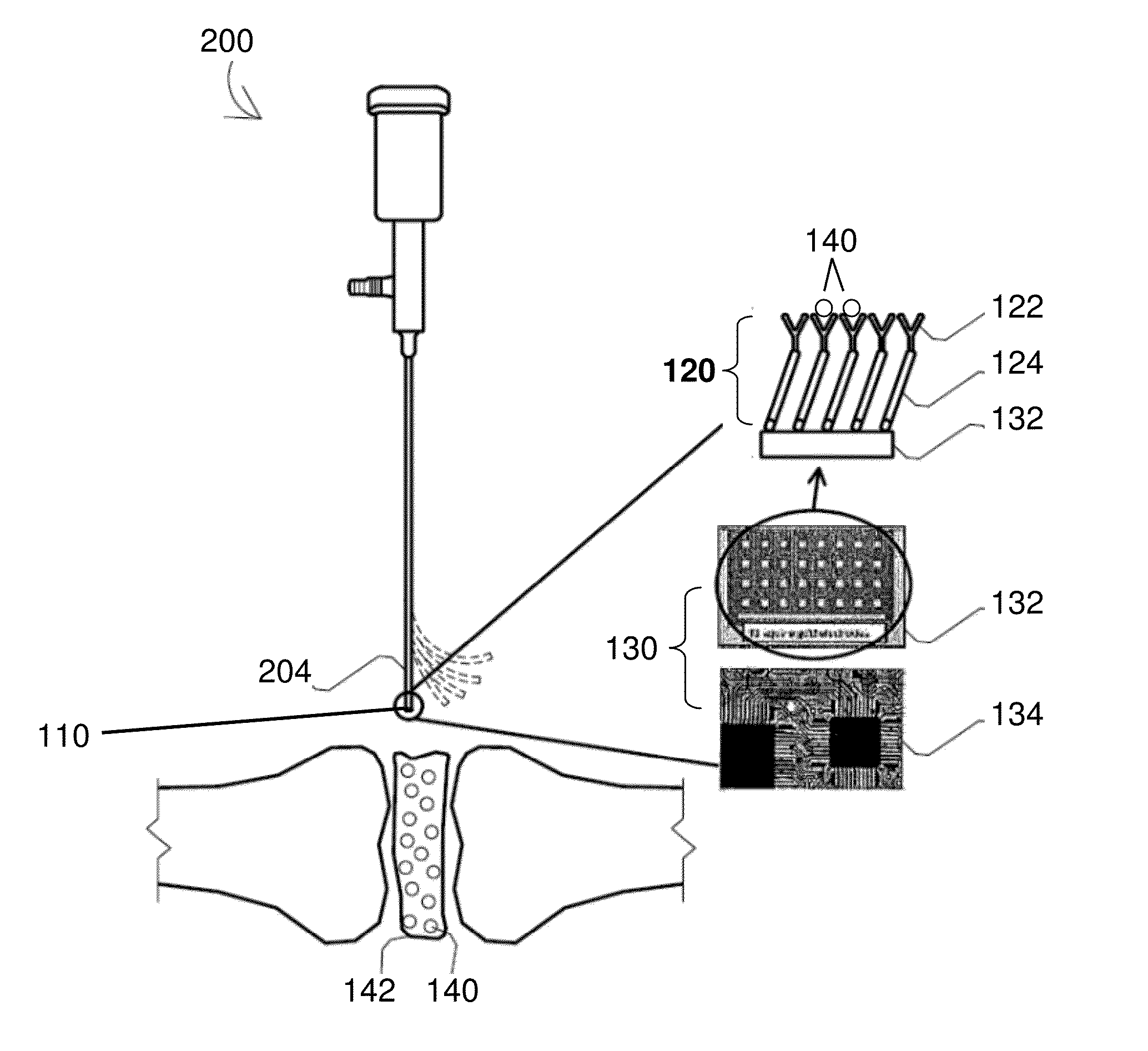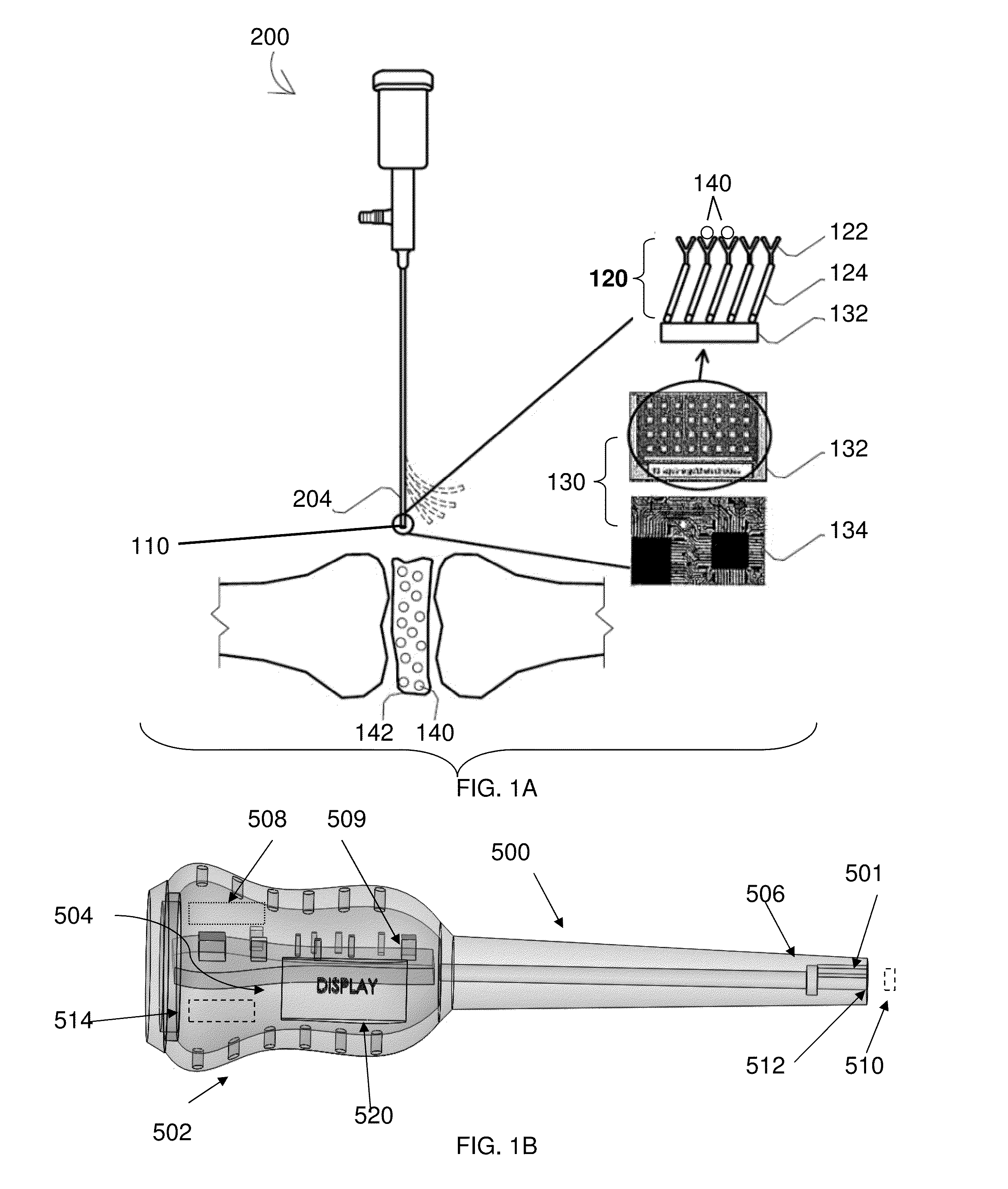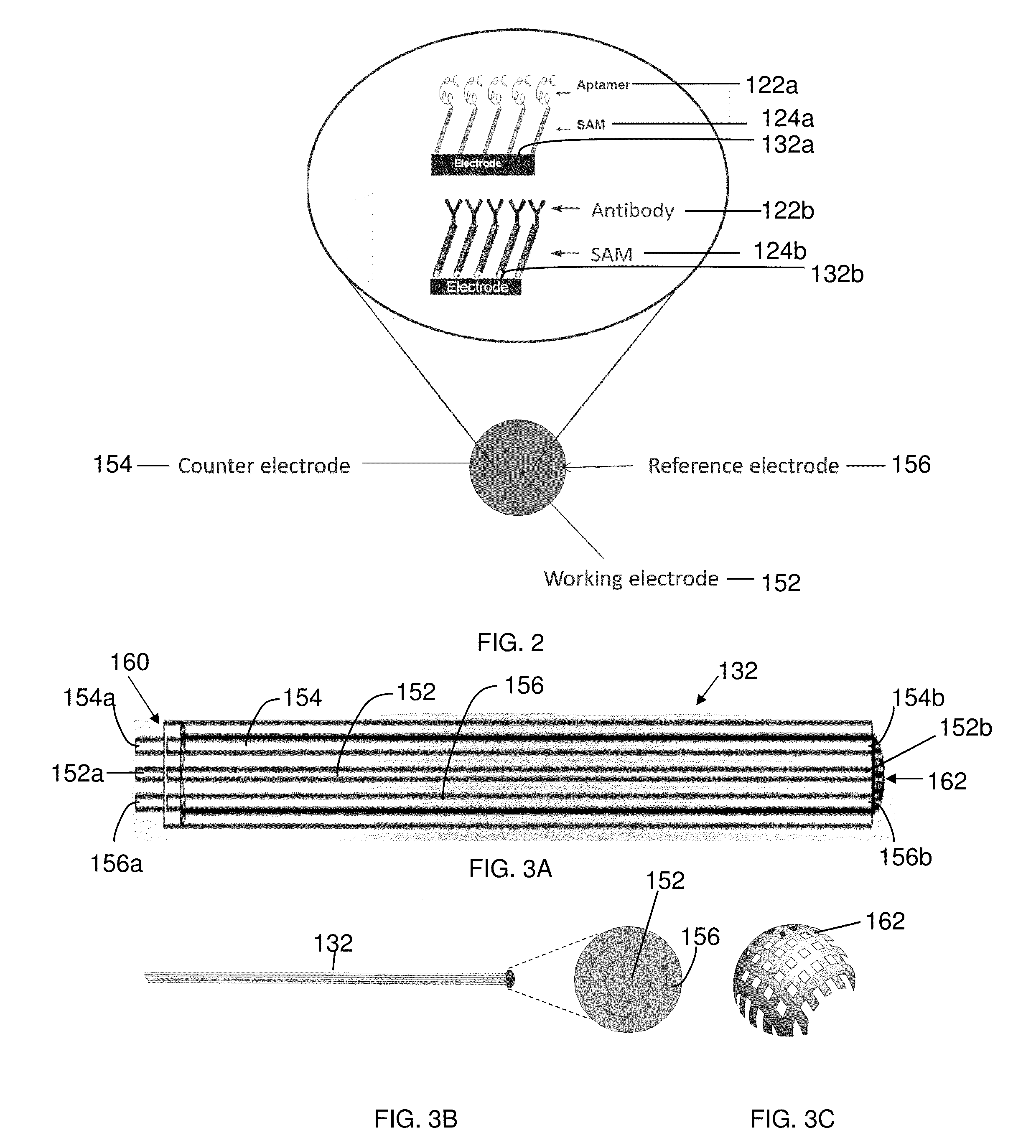A Biosensor Device to Target Analytes in Situ, in Vivo, and/or in Real Time, and Methods of Making and Using the Same
- Summary
- Abstract
- Description
- Claims
- Application Information
AI Technical Summary
Benefits of technology
Problems solved by technology
Method used
Image
Examples
example 1
[0109]Cyclic voltammetry was used for electrochemical characterization of the sensing matrix described herein. Cyclic voltammetry is an electrochemical technique based on electrical current measurement as a function of voltage. The technique involves a working electrode where redox reactions or adsorption occurs, a reference electrode as a constant potential reference, an auxiliary or counter electrode that completes the circuit, an electrolyte, and a potentiostat (voltage source).
[0110]Gold circuits deposited on a micro interdigitated electrode acted as a transducer. The sensing matrix comprised a SAM and was formed on a gold electrode as the working electrode. The working electrode, a reference electrode, and a counter electrode were placed in a glass flask that was filled with electrolytes. Voltage was changed at a pre-determined rate and range, and the corresponding current change was recorded.
[0111]The gold electrode with SAM was shown to have higher impedance than a bare gold ...
example 2
[0113]Screen printed electrodes (SPE) were sonicated in ethanol (99.5%) for 10 minutes and dried in a desiccator. A SPE was connected to a potentiostat and immersed in a conditioning solution containing 1 mL ammonium acetate buffer in 10 mL H2O. Potential sweeping was performed from 0.6 V to −0.5 V for electrochemical conditioning of the gold electrode surface.
[0114]A self-assembled monolayer (SAM) was formed on the SPE gold surface. SPEs were soaked in a solution of 1 mM 11-mercaptoundecanoic acid (MUA) in ethanol for 12 hours and then rinsed with ethanol to remove unbounded 11-MUA molecules. The electrodes were then treated in a solution of 0.05 M 1-ethyl-3-(3-dimethylaminopropyl)carbodiimide (EDC) and 0.2 M N-hydroxysuccinimide (NHS) crosslinkers. After being rinsed and dried, a solution of 20 μg / mL of Staphylococcus antibody in a phosphate buffer solution (pH 7.2) was dropped on the electrode surface and then held still for 2 hour. The electrode was then rinsed with a phosphate ...
example 3
[0115]Electrochemical impedance spectroscopy (EIS) was performed using the software interface of the potentiostat from 1 Hz to 100 kHz. FIGS. 12-15 show plots of impedance versus frequency.
[0116]FIG. 12 shows impedance curves that were generated by the sensing matrix comprising 11-MUA / MRSA antibody when it was exposed to serial dilutions of purified methicillin-resistant Staphyloccus aureus (MRSA) specific protein PBP2a in PBS for 10 minutes. The impedance shift was detectable at as low as 1 pg / ml of the protein, thus showing the sensitivity of this embodiment.
[0117]FIG. 13 shows the responding time of the sensing, where the signal can be detected as rapid as in 1 minute after the sensor exposed to the target protein.
[0118]FIG. 14 shows an impedance curve generated by the sensing matrix comprising 11-MUA / MRSA antibody when exposed to the culture of 106 cells / ml MRSA, 106 cells / ml non-resistant Staphylococcus aureus, or blank culture medium. A significant shift was observed when MRSA...
PUM
| Property | Measurement | Unit |
|---|---|---|
| Frequency | aaaaa | aaaaa |
| Frequency | aaaaa | aaaaa |
| Concentration | aaaaa | aaaaa |
Abstract
Description
Claims
Application Information
 Login to View More
Login to View More - R&D
- Intellectual Property
- Life Sciences
- Materials
- Tech Scout
- Unparalleled Data Quality
- Higher Quality Content
- 60% Fewer Hallucinations
Browse by: Latest US Patents, China's latest patents, Technical Efficacy Thesaurus, Application Domain, Technology Topic, Popular Technical Reports.
© 2025 PatSnap. All rights reserved.Legal|Privacy policy|Modern Slavery Act Transparency Statement|Sitemap|About US| Contact US: help@patsnap.com



